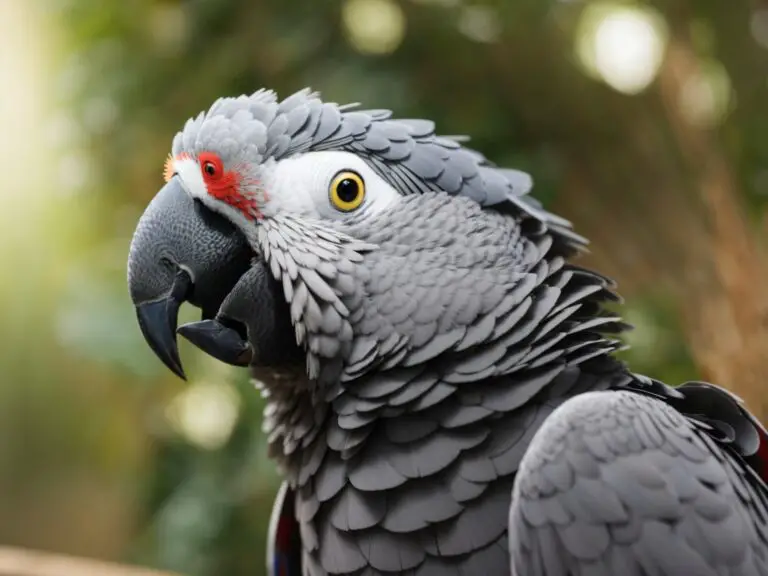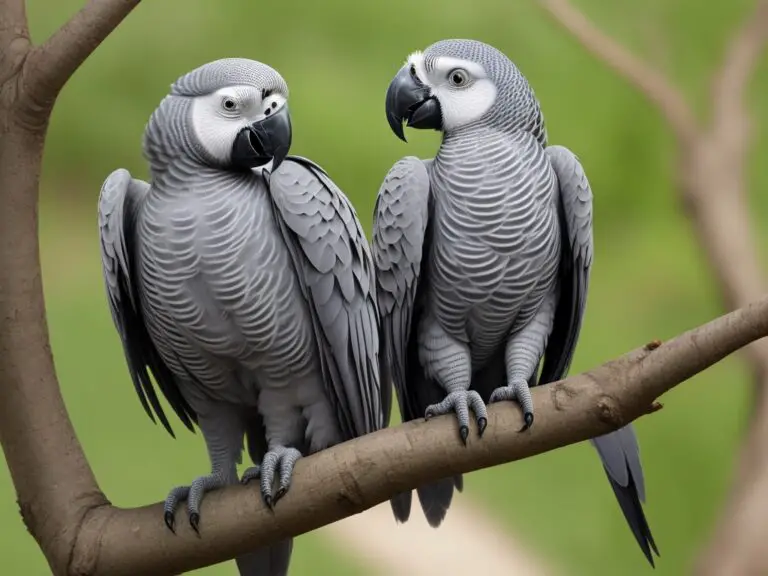How Often Do African Grey Parrots Molt?
Key Takeaways:
- African grey parrots molt once a year.
- Molting in African grey parrots typically occurs during the late summer or early fall.
- During molting, African grey parrots shed old feathers and grow new ones.
- Molting is a natural process for African grey parrots and helps maintain their feather health.
Have you ever wondered how often African grey parrots molt?
Well, you’re in the right place! Molting is a natural process that all parrots go through, and African greys are no exception.
In this article, I will walk you through the fascinating world of molting in African grey parrots, explaining what it is, why it happens, and when to expect it.
Plus, I’ll share some valuable tips on how to care for your feathered friend during this period.
So, if you’re ready to learn more about this feathered wonder, let’s dive in!
| Molting Period | Frequency |
| Juvenile Molting | Once a year |
| Adult Molting | Once or twice a year |
| Heavy Molting | Every 12 to 18 months |
| Seasonal Molting | Varies (can occur in spring or fall) |
Understanding Molting in African Grey Parrots
Molting in African Grey Parrots is a natural process where they shed old feathers and grow new ones. Understanding the reasons, timing, signs, and duration of molting can help you properly care for your African Grey Parrot.
What is Molting?
Molting is the natural process of shedding old feathers and replacing them with new ones in birds.
African Grey Parrots, like other birds, undergo molting to maintain healthy feathers for flight, insulation, and protection.
During molting, feathers may appear dull, and there may be an increase in feather loss.
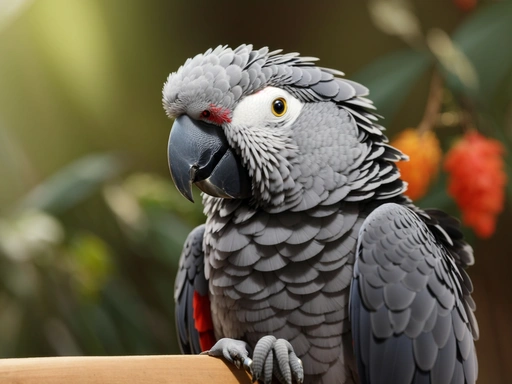
Why Do African Grey Parrots Molt?
African Grey Parrots molt to replace old feathers with new ones.
This helps maintain the health and condition of their plumage.
Molting also allows them to regulate their body temperature and aids in their ability to fly.
It’s a natural process for parrots to keep their feathers in top shape.
So, molt away, little Grey!
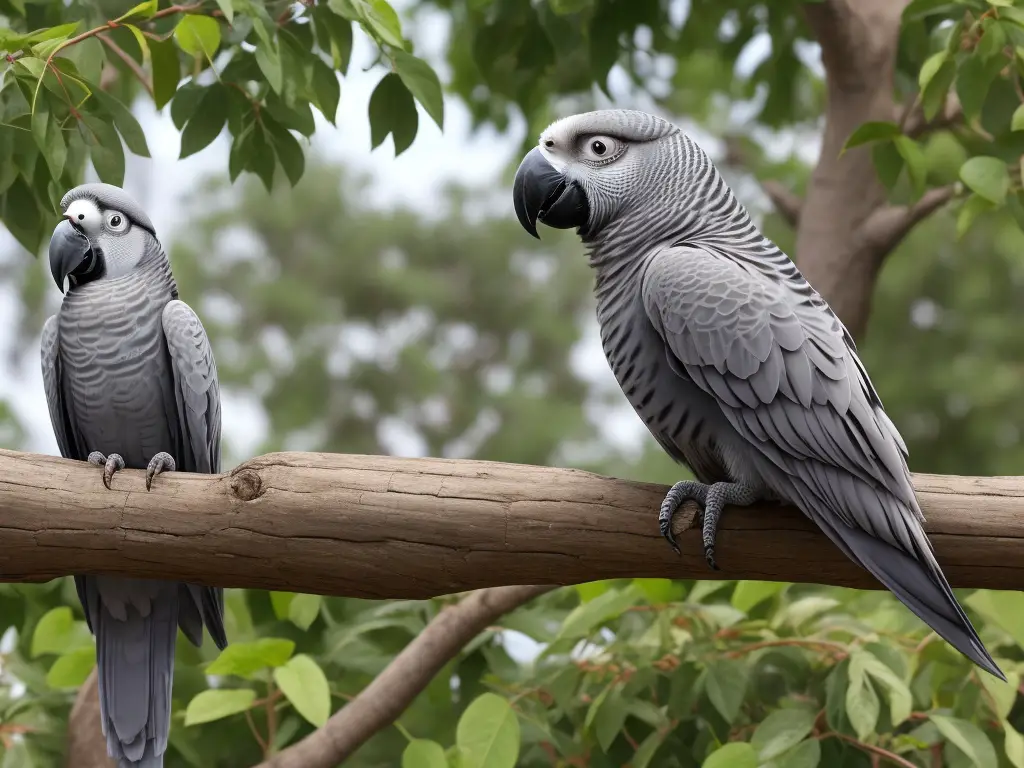
When Does Molting Occur in African Grey Parrots?
Molting in African Grey Parrots typically occurs once or twice a year.
The exact timing can vary depending on factors such as age, hormonal changes, diet, and environmental conditions.
Signs of molting include feather loss and regrowth.
Molting usually lasts for a few weeks to a couple of months.

What are the Signs of Molting in African Grey Parrots?
During molting, African Grey Parrots may show the following signs:
- Increased preening or scratching
- Feather loss or patches of bare skin
- New feather growth
- Changes in appetite or energy levels
- Irritability or mood changes
- Increased vocalizations or quieter behavior.
How Long Does Molting Last in African Grey Parrots?
Molting in African Grey Parrots can last anywhere from a few weeks to several months.
Each bird is different, and the duration of molting can vary based on factors like age, health, and environmental conditions.
It’s important to provide proper care and support during this time to ensure your parrot stays happy and healthy.
Factors Affecting Molting Frequency in African Grey Parrots
Several factors can affect the molting frequency in African Grey parrots, including age and hormonal changes, diet and nutrition, environmental factors, and their overall health and stress levels.
Age and Hormonal Changes
Age and hormonal changes play a significant role in molting frequency in African Grey Parrots.
Younger birds molt more frequently than adults, usually once or twice a year.
Hormonal changes, particularly during breeding season, can also trigger molting.
Understanding these factors helps us provide appropriate care during this natural process.
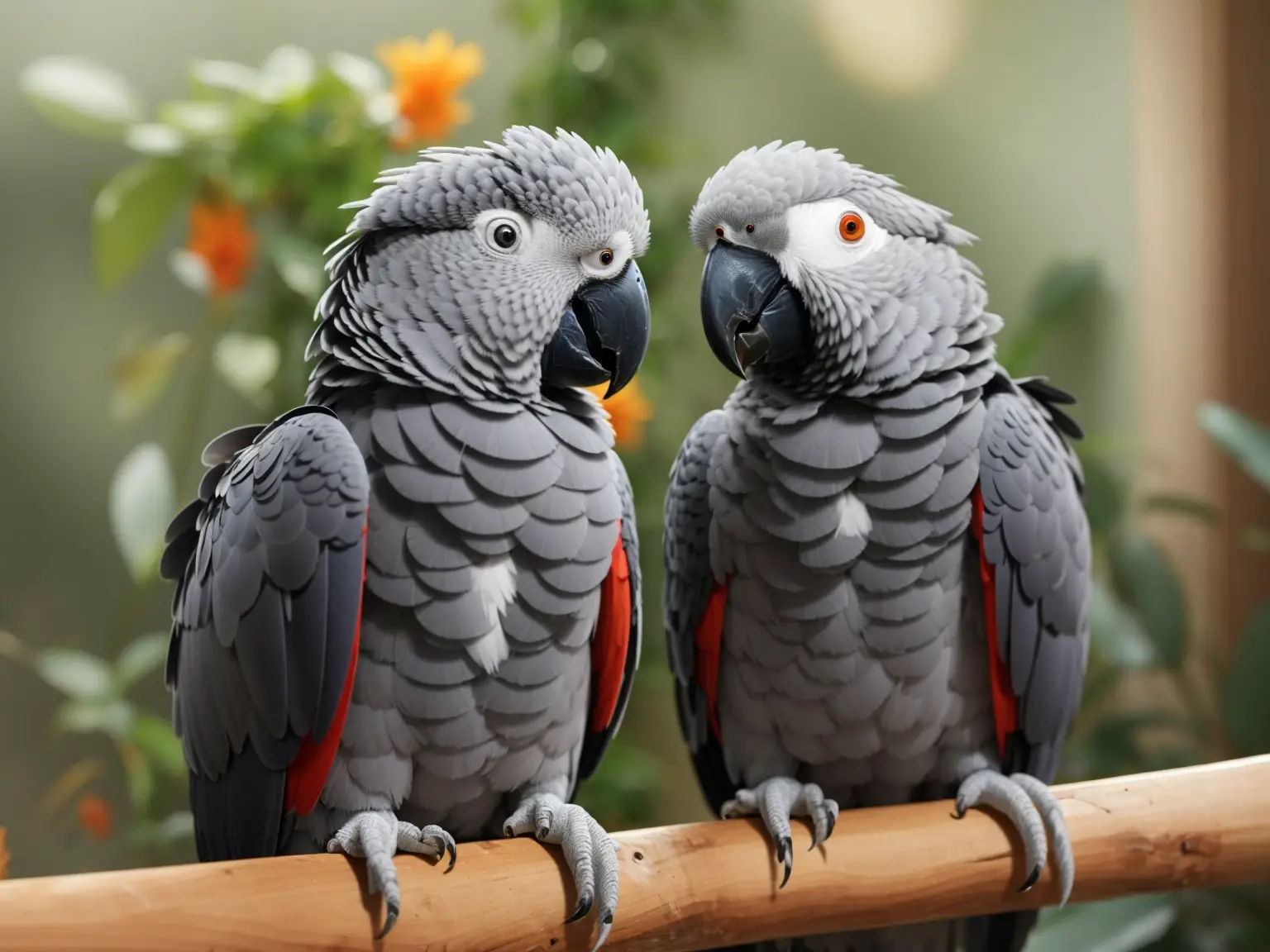
Diet and Nutrition
Proper diet and nutrition are essential for the health and well-being of African Grey Parrots during molting. A balanced diet should consist of high-quality pellets, fresh fruits and vegetables, and limited amounts of nuts and seeds.
Adding supplements like calcium and omega-3 fatty acids can be beneficial.
Hydration is important, so provide fresh water daily. Avoid feeding them avocado, chocolate, caffeine, alcohol, or high-fat and sugary foods.
Consult with a veterinarian for specific dietary recommendations.
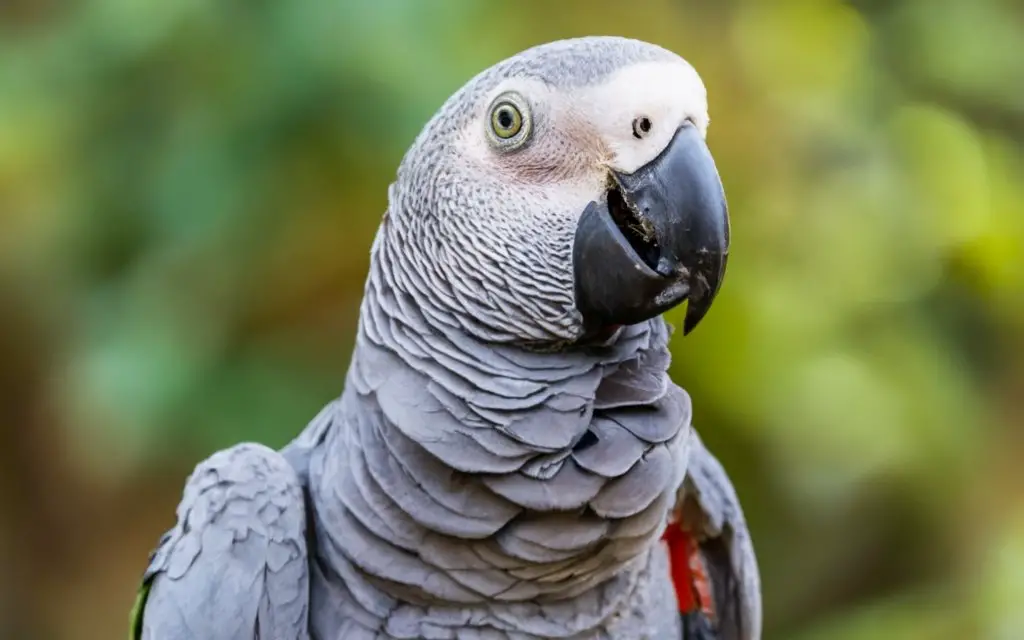
Environmental Factors
The environmental factors that can affect molting frequency in African Grey Parrots include temperature, humidity, lighting, and overall stress levels.
Extreme temperatures or fluctuations can disrupt the molting process.
A lack of proper humidity can result in dry and brittle feathers.
Adequate lighting is necessary for the synthesis of vitamin D, which is crucial for healthy feathers.
Finally, high levels of stress can negatively impact molting.
Health and Stress Levels
Health and stress levels are important factors that can affect the molting frequency of African Grey Parrots.
Poor health or high stress can disrupt the normal molting process.
It is crucial to provide a balanced diet, maintain a clean environment, and minimize stress and anxiety to support your parrot’s overall health and well-being during molting.
Caring for Your African Grey Parrot During Molting
During molting, make sure to provide a balanced diet, keep your parrot hydrated and clean, and minimize stress and anxiety.
Providing a Balanced Diet
Providing a balanced diet is essential for the health of your African Grey Parrot.
Offer a variety of fresh fruits, vegetables, and leafy greens.
Include high-quality pellets and grains.
Avoid feeding your parrot foods that are high in fat, sugary, or salty.
Remember to provide fresh water and monitor portion sizes.
Hydration and Bathing
During molting, it is important to ensure that your African Grey Parrot stays hydrated.
Provide fresh, clean water in a shallow dish or offer a misting spray for them to bathe in.
Bathing helps to soften the old feathers and make them easier to remove.
Make sure to monitor the water quality and cleanliness regularly to maintain their overall health and well-being.
Maintaining a Clean and Comfortable Environment
To maintain a clean and comfortable environment for your African Grey Parrot during molting, regularly clean the bird’s cage by removing droppings, feathers, and leftover food. Provide fresh bedding and toys.
Ensure proper ventilation and temperature control.
Minimize exposure to drafts, smoke, and chemicals. Regularly check for signs of any pests or parasites.
Keep the area around the cage clean to prevent the spread of microorganisms and potential health issues.
Minimizing Stress and Anxiety
Minimizing stress and anxiety in African Grey parrots is essential for their well-being. Here are a few ways to help them during molting:
- Maintain a calm environment: Limit loud noises and sudden disruptions. Keep their living space quiet and cozy.
- Stick to a routine: Establish a consistent daily routine to provide them with a sense of security and stability.
- Offer mental and physical stimulation: Engage them in activities like puzzle toys, foraging, and interactive play to keep them occupied and mentally stimulated.
- Provide a safe hiding place: Offer a cozy and secure spot where they can retreat when they feel overwhelmed or anxious.
- Avoid excessive handling: During molting, give them space and refrain from excessive handling to prevent added stress.
- Monitor their health: Regularly check their feathers, skin, and overall health. If you notice any issues or changes, consult a veterinarian.
Remember, every bird is unique, so observe your African Grey parrot closely and make adjustments based on their specific needs.
Frequently Asked Questions about Molting in African Grey Parrots
How often do African Grey Parrots molt?
African Grey Parrots molt once or twice a year. Molting is the process of shedding old feathers and growing new ones.
It is a natural and necessary part of their life cycle.
The duration of molting can vary, but it typically lasts for a few weeks to a couple of months. During this time, you may notice changes in your parrot’s appearance and behavior.
Providing proper care and a supportive environment can help your African Grey Parrot through the molting process.
Are there any health concerns during molting?
During molting, African Grey Parrots may experience some health concerns. Feather loss and regrowth can cause itchiness and discomfort, leading to excessive scratching.
Additionally, molting birds may require additional nutrients for feather development.
Ensuring a balanced diet and providing opportunities for bathing can help alleviate these concerns. Regular vet check-ups are important to monitor overall health during this process.
Do African Grey Parrots require special care during molt?
During molt, African Grey Parrots do require some special care. They may experience discomfort and itchiness, so providing them with gentle baths and showers can help ease their discomfort.
It’s also important to keep their environment clean to reduce the risk of feather infections.
Additionally, offering a balanced diet rich in protein and nutrients will support their feather growth. Lastly, minimizing stress and anxiety is crucial during this time to promote a healthy molt.
Can molting affect the behavior of African Grey Parrots?
Yes, molting can indeed affect the behavior of African Grey Parrots.
During molting, parrots may experience discomfort, itchiness, and even pain, which can lead to changes in their behavior.
They may become irritable, restless, or exhibit increased aggression.
Additionally, molting can cause fatigue and decreased appetite, influencing their overall mood and activity levels.
It’s important to provide extra care and attention to your parrot during this time to help alleviate any discomfort and support their well-being.
How can I tell if my African Grey Parrot is going through molting?
To tell if your African Grey Parrot is going through molting, look for signs such as loss of feathers, new feathers growing in, changes in behavior or appetite, and an increase in preening. You may also notice an increase in dust or dander during this time.
Paying attention to these signs can help you determine if your parrot is going through molting.
Final Verdict
African Grey Parrots molt roughly once a year, typically during the spring and summer months.
Molting is a natural process in which old feathers are shed and replaced with new ones.
Factors such as age, diet, environment, and overall health can affect the frequency and duration of molting.
During this time, it is essential to provide a balanced diet, ensure proper hydration and bathing, maintain a clean and comfortable environment, and minimize stress and anxiety.
By understanding and caring for your African Grey Parrot during molting, you can help ensure their health and well-being throughout this natural process.


